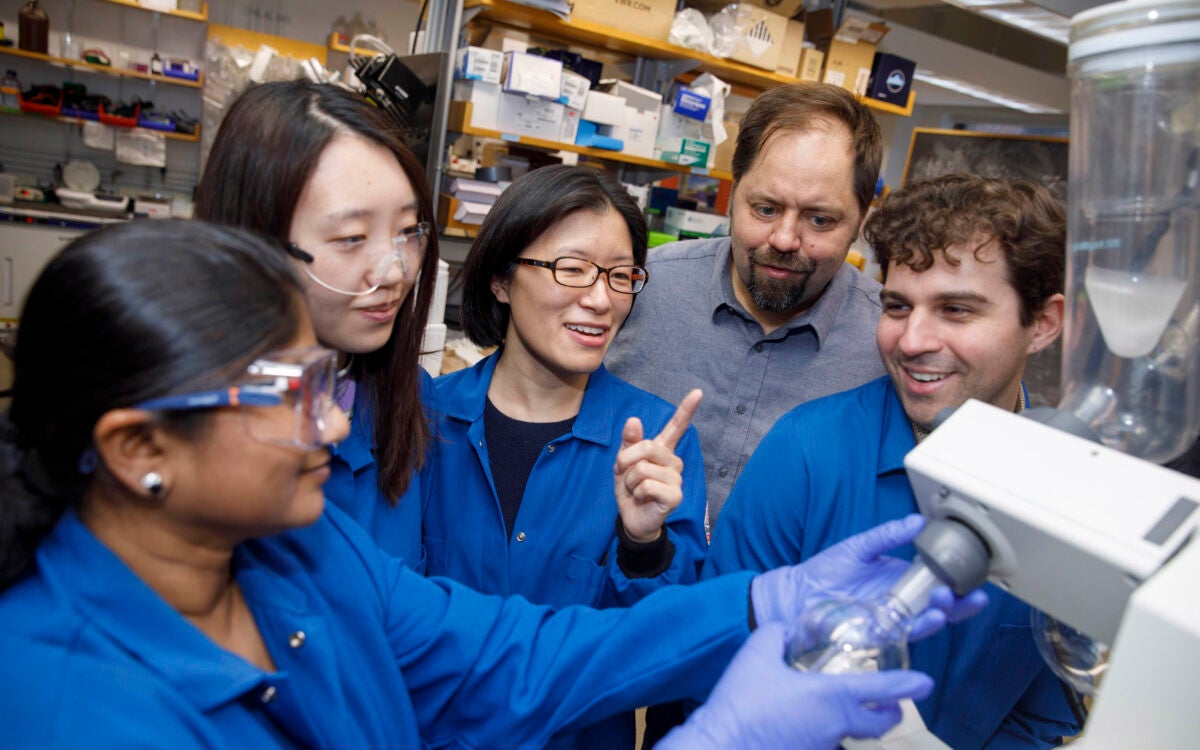Cocoa shows promise as next wonder drug
Boosts blood flow to heart, brain, and other organs
A big problem facing Americans and Europeans is the dangerous rise in blood pressure with age, increasing their risk of heart disease and diabetes. Kuna Indians living off the Caribbean coast of Panama don’t have that problem. Norman Hollenberg, a professor of radiology at Harvard Medical School, is convinced that it’s because they drink more than five cups of cocoa a day.
Hollenberg believes cocoa may also be the answer to other serious problems. “Several studies have shown that a decrease in blood flow to the brain is tied to both dementia, including Alzheimer’s disease, and stroke,” he notes. “Increasing evidence points to heavy intake of certain types of cocoa as an easy, inexpensive way to increase blood to the brain and, thus, to play a role in reducing the risk of those devastating diseases.”
Don’t run to the beverage section of your local market right away, however. Hollenberg’s and his colleagues’ experiments dealt with natural cocoa, not varieties that have undergone extensive processing to suit consumer tastes. The natural stuff is chock-full of ingredients called flavanols, antioxidant compounds found in cocoa beans. Getting cocoa out of nature and into a box on a shelf removes much of the flavanols.
Mars Inc., the candy company, is trying to close the gap with a flavanol-rich cocoa called Cocoapro. Tests to date have found that the equivalent of four cups of this cocoa dramatically increased blood flow to the arms and fingers of people after only four days. Hollenberg maintains that such an increase can help people fighting diseases ranging from high blood pressure, hardening of arteries, and stroke to diabetes, vascular dementia, and preeclampsia, a serious condition that affects pregnant women.
Kuna cocoa
The roots of Hollenberg’s fascination with cocoa go back to the early 1990s when he was looking for genes that might protect humans against high blood pressure. “A logical possibility is that, if there are ‘bad genes’ that predispose people to high blood pressure, there might be ‘good genes’ that protect against it,” he says.
To test that idea, Hollenberg needed to find an isolated, interbreeding group of people among whom high blood pressure is uncommon and does not rise with age. Then he could sample their blood and study how their genes differ from those without such protection.
Such a population was known to live on a group of islands off the Caribbean coast of Panama, where they have been relatively isolated for more than 500 years. As it turned out, however, the plan didn’t work. The blood pressures of several hundred Kuna Indians who had moved to Panama City and its suburbs were checked. Diet, stress, and other factors had taken away their resistance to hypertension. So it wasn’t in their genes.
Were they eating too much salt? Hollenberg investigated that, and found that Kuna living on both the islands and the mainland consume as much if not more salt than people in the United States.
With funds from the Baxter Foundation, Hollenberg then conducted a study of what the islanders eat and drink. “The most outstanding finding was the fact that most them consume cocoa as their major drink and do so every day,” he reports, “Many Kuna, in that hot and humid climate, probably drink more than five cups per day.”
Tests by Mars reveal Kuna cocoa to be much richer in flavanols than any available in stores in the United States or Western Europe. That’s because of handling after harvest and processing to improve taste and appearance.
The flavanol family also has caught the world’s attention as an ingredient of red wine and some teas, and flavanols are considered to be at least partially responsible for these beverages’ reputation for lowering the risk of heart disease and even extending life span.
NO help
In another big surprise, lab tests reveal that Kuna cocoa stimulates the body to produce something called nitric oxide, a notorious compound present in cigarette smoke and automobile exhausts. However, NO, as it is also called, has a good side. “It turns out to be part of an internal regulatory system that operates in the heart, blood vessels, brain, penis, liver, pancreas, lungs, eyes, and likely every other organ in the body,” says Thomas Michel, a professor of medicine at Harvard Medical School who was one of the first to recognize the wonders of NO. “It is a versatile gas that could lead to new treatments for high blood pressure, blocked arteries, congestive heart failure, stroke, dementia, and impotence.” (See April 2, 1993, Gazette)
To sum it up, nitric oxide relaxes blood vessels to allow an increased flow of blood and oxygen to the heart, brain, and other organs of the body. Hollenberg thinks that flavanols somehow activate a gene or genes that make NO.
Strokes and so-called vascular dementia involve restricted flow of blood to the brain, so Hollenberg and others naturally regard flavanol-rich cocoa as a possible treatment for those ills. Stroke is one of the world’s major killers, and dementias, including Alzheimer’s disease, afflict 10 percent of people over the age of 65.
One study, conducted with more than 1,300 elderly people in France, found that flavanoids, a larger category that includes flavanols, decreased the risk of dementia. In Holland, researchers followed 1,730 people aged 55 and older for six years. Their results suggest that a decreased flow of blood to the brain precedes and possibly contributes to the onset of dementia.
In the United States, investigators have linked blood flow problems to certain brain areas of older people who rapidly progressed to Alzheimer’s. This raises the interesting possibility of turning back or slowing down both the rise in blood pressure and the loss of cognition with age.
Hollenberg did experiments in which healthy people more than 50 years old drank flavanol-rich cocoa. Blood flow increased in these elders just the way it did when he did the same type of test on healthy young people.
“Among the elderly, cognitive decline is a growing public health issue with enormous medical and financial costs. The prospect of a targeted treatment to reverse the decline in cerebral blood flow that accompanies dementias is extremely promising,” Hollenberg told a Feb. 18 meeting of the American Association for the Advancement of Science during a session titled “The Neurobiology of Chocolate: A Mind-Altering Experience.”
He also described “exciting possibilities” for new types of flavanol drugs for treating type 2 diabetes and preeclampsia, a serious condition that affects about 7 percent of pregnant women in developed countries and more than twice that number in some African nations. In Kuna women, “the problem is very uncommon,” Hollenberg notes.
Finally, an article in the latest issue of the International Journal of Medical Science reports that Kuna who keep drinking cocoa in their home islands enjoy much lower death rates from heart attacks, strokes, diabetes, and cancer than those who move to mainland cities and suburbs.




